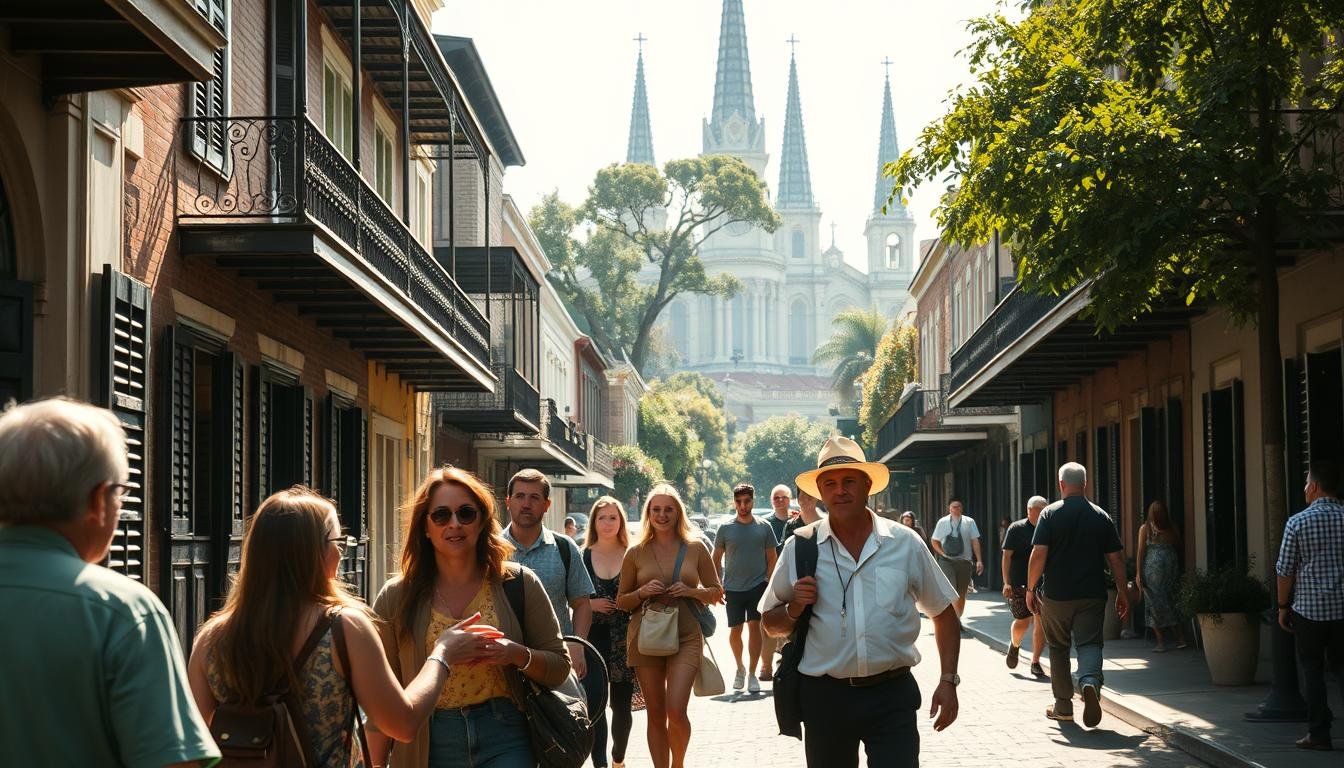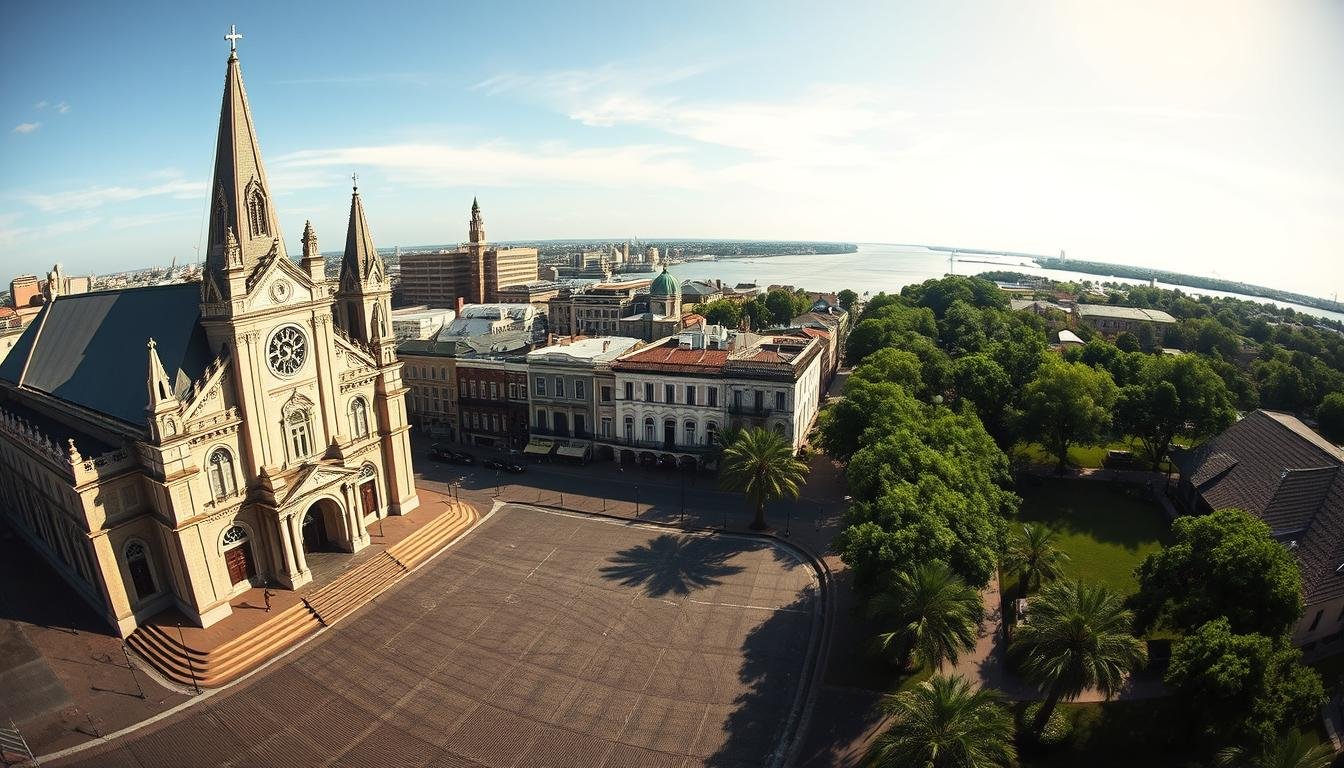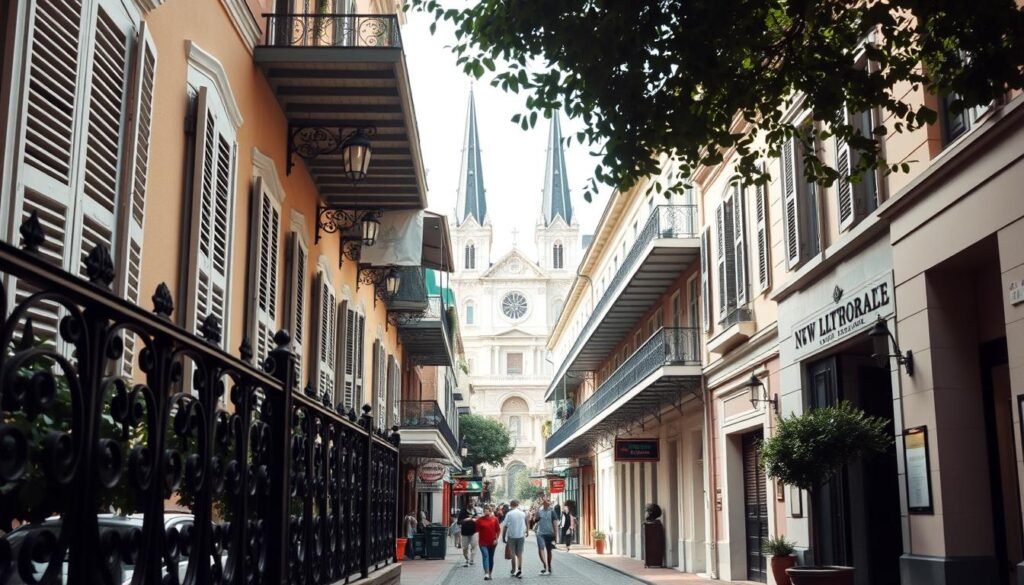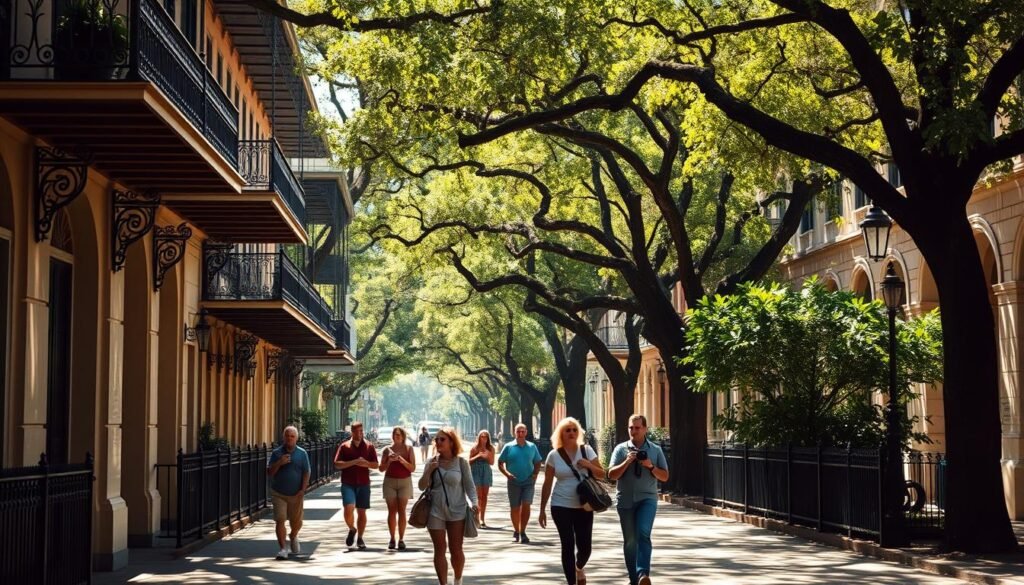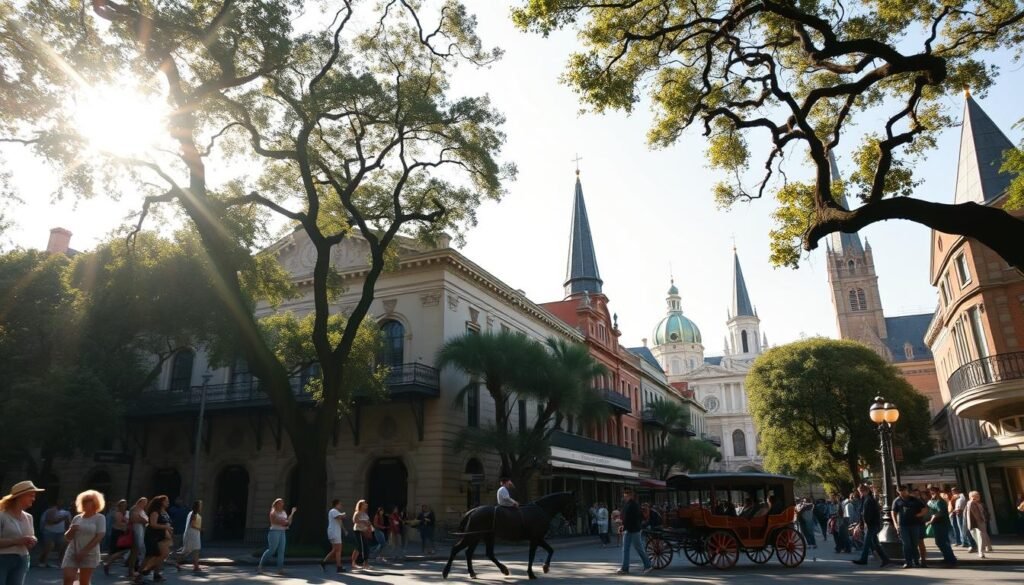As a local, I’m excited to share with you the rich history and culture of New Orleans through its fascinating historical walking tours. Imagine strolling through the charming streets of the French Quarter, taking in the vibrant atmosphere, and uncovering the city’s hidden gems.
Our guided walking tour offers a unique and immersive experience, allowing you to explore the city’s past and present in a fun and engaging way. You’ll discover the stories behind the city’s iconic landmarks, visit historic sites, and gain a deeper understanding of the local culture.
Key Takeaways
- Explore the rich history and culture of New Orleans through its historical walking tours.
- Discover the city’s hidden gems and iconic landmarks.
- Experience the city’s vibrant atmosphere and local culture.
- Gain a deeper understanding of the city’s past and present.
- Enjoy a unique and immersive experience with our guided walking tour.
Why Choose a Historical Walking Tour in New Orleans?
There’s no better way to experience the charm and character of New Orleans than by taking a historical walking tour through its iconic neighborhoods. By choosing this type of tour, you’ll get to explore the city’s rich cultural heritage firsthand.
A historical walking tour offers a unique cultural experience that allows you to delve into the city’s fascinating history. You’ll have the opportunity to visit landmarks, hidden courtyards, and charming neighborhoods that are steeped in history and culture.
Unique Cultural Experience
One of the standout benefits of a historical walking tour is the chance to experience the city’s unique culture. From the jazz clubs to the historic architecture, New Orleans is a city that’s full of life and energy. By taking a guided tour, you’ll be able to tap into this energy and get a deeper understanding of what makes the city tick.
Learn from Local Guides
When you choose a historical walking tour, you’ll be learning from local guides who know the city’s history inside and out. These guides are passionate about sharing their knowledge with visitors, and they’ll provide you with insights and anecdotes that you won’t find in any guidebook.
Explore at Your Own Pace
Another advantage of a historical walking tour is that you’ll be able to explore at your own pace. While you’ll have the benefit of a knowledgeable guide, you’ll also have the freedom to take your time and soak up the atmosphere. Whether you’re interested in history, architecture, or simply enjoying the city’s laid-back vibe, a walking tour gives you the flexibility to do so.
By choosing a historical walking tour in New Orleans, you’ll be able to experience the city’s french quarter history tour and walking tours in new orleans french quarter like never before. With its unique blend of culture, history, and entertainment, New Orleans is a city that’s sure to captivate and inspire.
The Rich History of New Orleans
New Orleans, a city with a history as vibrant as its jazz scene, has been a melting pot of cultures since its founding. This unique blend of influences has shaped the city into the cultural hub it is today.
The Founding and Early Years
Founded by the French in 1718, New Orleans was initially a strategic outpost that quickly grew into a bustling port city. The city’s early years were marked by the convergence of French, Spanish, and African cultures, laying the groundwork for the rich cultural heritage that defines New Orleans today. Our historical walking tours will take you through the historic streets, exploring the architectural and cultural landmarks that tell the story of the city’s founding and early development.
The Impact of French Influence
The French influence on New Orleans is palpable, from the city’s architecture to its culinary traditions. The French Quarter, with its iconic balconies and ornate ironwork, is a testament to the city’s French heritage. As you walk through the iconic historical sites in New Orleans, you’ll discover how the French legacy has shaped the city’s identity and continues to influence its culture today.
The Birthplace of Jazz
New Orleans is renowned as the birthplace of jazz, a genre that emerged in the late 19th and early 20th centuries. The city’s jazz scene was fueled by the blending of African rhythms with European instrumentation and harmonies. By exploring the historic sites associated with jazz legends, our best historical tours in New Orleans offer a deep dive into the city’s musical heritage, showcasing the venues and neighborhoods that gave birth to this iconic American art form.
Through its rich history, cultural landmarks, and vibrant jazz scene, New Orleans offers a unique and captivating experience for visitors. By joining one of our historical walking tours, you’ll gain a deeper understanding of the city’s complex history and its significance as a cultural melting pot.
Iconic Locations to Visit
As you wander through New Orleans, you’ll discover iconic locations that tell the story of the city’s fascinating past. The city’s rich history is palpable in its architecture, cultural landmarks, and historic districts.
The French Quarter
The French Quarter, also known as the Vieux Carré, is one of the city’s most iconic neighborhoods, known for its charming architecture, lively nightlife, and rich history. Our historical walking tours will take you through the Quarter’s most iconic locations, offering a self-guided walking tour new orleans experience like no other.
Some of the top attractions include:
- Historic homes and buildings
- Vibrant nightlife and entertainment venues
- Cultural landmarks and museums
Jackson Square
Jackson Square is a historic park in the heart of the French Quarter, surrounded by street performers, artists, and historic buildings. It’s a great place to experience the city’s energy and creativity, and is often part of haunted history tours new orleans.
Key features of Jackson Square include:
- The St. Louis Cathedral
- Historic mansions and architecture
- Street performers and live music
St. Louis Cathedral
The St. Louis Cathedral is a beautiful and historic cathedral located in Jackson Square. It’s one of the city’s most iconic landmarks and a must-visit for anyone interested in history, architecture, or faith.
The cathedral’s history dates back to 1794, and it’s been a central part of the city’s spiritual and cultural life ever since.
Types of Tours Available
Whether you’re a history buff, an architecture enthusiast, or a thrill-seeker, there’s a walking tour in New Orleans that’s perfect for you. Our city is rich in history, cultural significance, and paranormal activity, offering something for every interest.
Ghost Tours
For those fascinated by the paranormal, our ghost tours offer a spine-tingling experience. You’ll explore New Orleans’ most haunted locations, hearing tales of ghostly encounters and supernatural occurrences. Our guides are knowledgeable and engaging, making this a tour you won’t soon forget.
Key locations: The LaLaurie House, The Bourbon Orleans Hotel, and other haunted hotspots.
Architectural Tours
If you’re drawn to the beauty of architecture, our guided tours will take you through the city’s most stunning buildings and historic districts. You’ll learn about the unique styles that define New Orleans, from Creole to Art Deco.
Notable landmarks: The Cabildo, Gallier House, and the iconic St. Louis Cathedral.
Civil Rights Tours
For a deeper understanding of the civil rights movement, our tours examine the significant role New Orleans played in this pivotal period. You’ll visit sites that highlight the struggles and triumphs of the era, gaining a new appreciation for the city’s complex history.
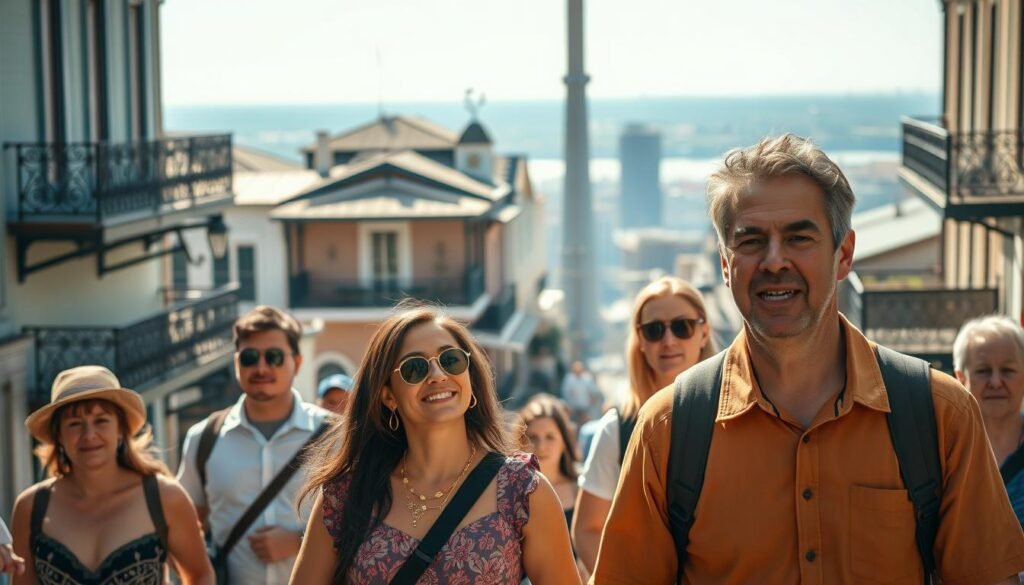
| Tour Type | Key Features | Duration |
|---|---|---|
| Ghost Tours | Haunted locations, paranormal stories | 2 hours |
| Architectural Tours | Historic buildings, architectural styles | 1.5 hours |
| Civil Rights Tours | Historic sites, civil rights history | 3 hours |
With our top rated historical walking tours new orleans, you’re in for a treat. Each tour is designed to provide a unique perspective on the city, ensuring a memorable experience. Whether you’re a local or just visiting, our guided walking tour new orleans will leave you with a deeper appreciation for this vibrant city.
Recommended Tour Companies
To experience the best of New Orleans, you need to pick the right historical walking tour company. The city is home to a variety of tour operators, each offering unique perspectives and experiences. When it comes to choosing a tour company, you want to make sure you’re getting the best possible experience.
Here are some of the top-rated tour companies that can help you discover the rich history and culture of New Orleans.
Free Tours by Foot
Free Tours by Foot is a popular choice among visitors, offering free walking tours that cover many of the city’s most iconic landmarks. While the tours are free, tips are appreciated, making it a great option for those on a budget. Their guides are knowledgeable and provide insightful commentary on the history and culture of the areas visited.
New Orleans Historical Tours
For a more in-depth historical experience, New Orleans Historical Tours is an excellent choice. Their tours are led by expert historians who provide detailed information about the city’s past, from its founding to its role in the Civil Rights Movement. This tour company offers a range of tours, including some that focus on specific aspects of New Orleans’ history.
Cajun Encounters
If you’re interested in exploring the cultural heritage of the region, Cajun Encounters offers tours that delve into the history and traditions of the Cajun and Creole communities. Their guides are passionate about sharing the stories and legends of the area, providing a unique and immersive experience.
These tour companies offer a range of historical walking tours in New Orleans, catering to different interests and preferences. Whether you’re a history buff, a culture vulture, or simply looking for a unique way to experience the city, there’s a tour out there for you.
What to Expect on Your Tour
As you prepare for your New Orleans historical walking tour, you might be wondering what the experience will be like. Our tours are designed to provide a rich and immersive experience, taking you through the city’s most iconic historical sites in the French Quarter.
Our guides are knowledgeable locals who are passionate about sharing the history and culture of New Orleans. They’ll regale you with stories and anecdotes that bring the city’s past to life.
Duration and Itinerary
Our walking tours typically last around 2 hours, giving you ample time to absorb the atmosphere and take in the sights. The itinerary is carefully crafted to include the most significant and fascinating locations, such as Jackson Square and St. Louis Cathedral.
- Explore the historic French Quarter
- Visit iconic landmarks like Jackson Square
- Discover the history behind St. Louis Cathedral
Group Size and Personalization
We keep our group sizes small to ensure that everyone receives a personalized experience. This allows our guides to engage with each participant and answer any questions you may have.
By keeping the groups intimate, we can tailor the tour to the interests of the participants, making the experience even more enjoyable and memorable.
What to Bring
To make the most of your tour, we recommend wearing comfortable shoes, as we’ll be walking through the historic streets of the French Quarter. It’s also a good idea to bring water, especially during the warmer months.
Don’t forget your camera – you’ll want to capture the beauty and charm of New Orleans’ iconic historical sites. Our guides will also be happy to provide tips on the best spots to take photos.
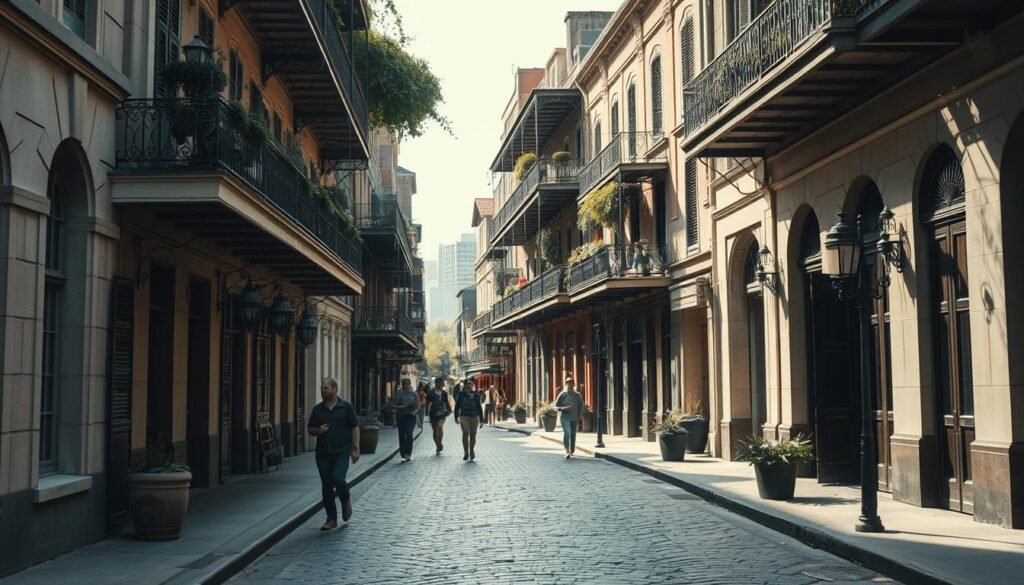
Tips for an Enjoyable Experience
Before you set out on your New Orleans historical walking tour, here are some tips to ensure you have a great time. A little preparation can go a long way in making your experience enjoyable and memorable.
Wear Comfortable Shoes
New Orleans is a city best explored on foot, especially in the historic French Quarter. You’ll be doing a lot of walking, so wear comfortable shoes that can handle the miles of cobblestone streets and sidewalks. You’ll be glad you did, as you’ll want to take in all the sights without distraction.
Stay Hydrated
The New Orleans climate can be quite warm and humid, especially during the summer months. Make sure to stay hydrated by bringing a water bottle with you on your tour. Many tour companies also provide water breaks, but it’s always a good idea to come prepared.
Bring a Camera
With its rich history, vibrant culture, and stunning architecture, New Orleans is a photographer’s paradise. Don’t forget to bring a camera to capture the unique atmosphere and memorable moments from your tour. Whether you’re a professional photographer or just like to snap a few photos, you’ll want to document your experience.
By following these simple tips, you’ll be well on your way to having a fantastic time on your self-guided walking tour or haunted history tour in New Orleans. Enjoy the journey and soak up the city’s unique charm!
The Best Time of Year for a Tour
The best time to explore New Orleans on a historical walking tour depends on what you’re looking for. As a local, I’ve experienced the city’s charm in various seasons, and I’m here to share my insights.
Weather Considerations
New Orleans weather can be quite unpredictable. Spring (March to May) and fall (September to November) are generally the best times to visit, with mild temperatures and fewer extreme weather conditions. Summer can be sweltering, with high humidity, while winters are typically mild but can have occasional cold fronts.
| Season | Weather | Tour Experience |
|---|---|---|
| Spring | Mild temperatures, occasional rain | Ideal for walking tours, comfortable exploring |
| Summer | Hot and humid | Can be challenging, but great for experiencing the city’s vibrant energy |
| Fall | Comfortable temperatures, fewer crowds | Excellent for historical tours, enjoying the city’s scenery |
| Winter | Mild, with occasional cold snaps | Good for those who prefer cooler weather, fewer tourists |
Avoiding Crowds
If you’re looking to avoid the crowds, consider visiting during the shoulder season – April to May or September to October. These periods offer a great balance between comfortable weather and smaller crowds, making your historical walking tour more enjoyable.
Seasonal Events to Experience
New Orleans is known for its vibrant festivals and events. If you’re interested in experiencing the city’s culture, plan your visit around events like Mardi Gras (usually in February) or Jazz Fest (late April to early May). These events are a fantastic way to immerse yourself in the local culture, though they do attract larger crowds.
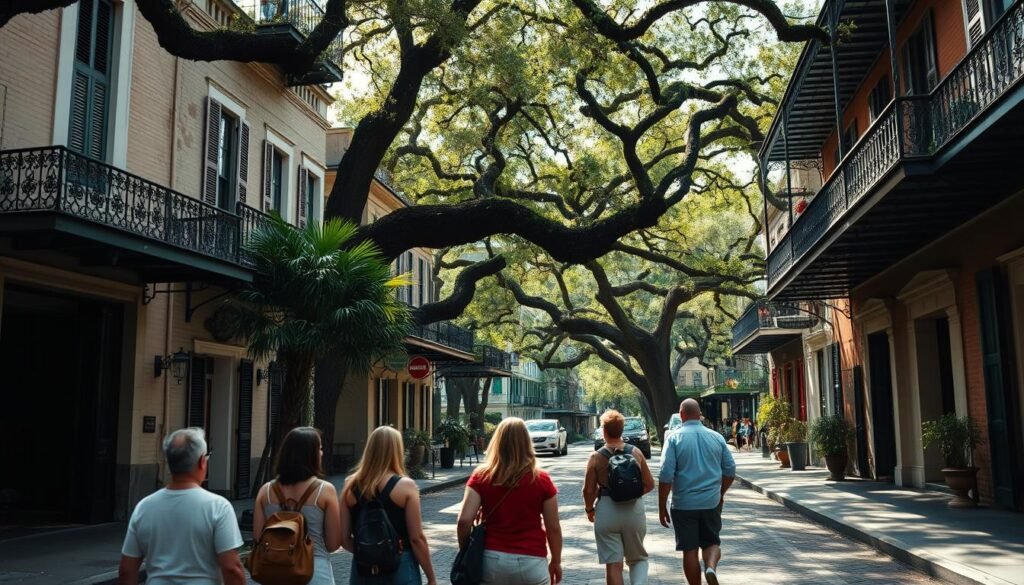
When planning your top rated historical walking tours new orleans, consider the time of year that best fits your preferences. Whether you’re looking for comfortable weather, smaller crowds, or the excitement of seasonal events, New Orleans has something to offer throughout the year. For a french quarter history tour, the spring and fall seasons are particularly recommended.
Family-Friendly Tour Options
Exploring the historic streets of New Orleans with your family has never been more enjoyable, thanks to our kid-friendly tours. We believe that New Orleans historical walking tours are a great way to introduce kids to the city’s rich history and culture in an engaging manner.
Our tours are designed to be fun and educational, making them perfect for families. We incorporate various elements to keep children engaged, ensuring that everyone has a memorable experience.
Interactive Storytelling
One of the highlights of our family-friendly guided walking tour New Orleans is the interactive storytelling. Our guides are skilled at bringing history to life through engaging narratives and anecdotes, making the experience enjoyable for kids and adults alike.
- Guides use props and visual aids to enhance the storytelling experience.
- Children are encouraged to participate, asking questions and sharing their observations.
- Stories are tailored to be appropriate and interesting for all ages.
Kid-Specific Themes
We offer New Orleans historical walking tours with kid-specific themes that cater to their interests. From pirate tales to stories of historical figures, our themes are designed to captivate young minds.
- Pirate-themed tours that explore the city’s buccaneer history.
- Tours focusing on famous historical figures, making history relatable and fun.
- Adventure tours that include scavenger hunts, keeping kids engaged and active.
Learning Opportunities for All Ages
While our tours are designed to be enjoyable for kids, they also offer significant learning opportunities for the whole family. Our guides provide insights into the city’s history, architecture, and culture, enriching your understanding of New Orleans.
“The best way to learn about the city’s history is by walking through its streets and experiencing its culture firsthand.” This is the philosophy behind our tours, and we believe it makes for a truly memorable experience.
By choosing our family-friendly guided walking tour New Orleans, you’re not only creating memories but also fostering a deeper appreciation for the city’s heritage among your children. Join us for a tour that will leave you with a newfound love for New Orleans.
Supporting Local Businesses on Your Tour
When you choose a historical tour in New Orleans, you’re not just exploring the city’s rich history, you’re also supporting local businesses that make this experience possible. By opting for a local tour company, you’re directly contributing to the local economy.
The Impact of Local Guides
Our guides are the heartbeat of our tours – knowledgeable, passionate, and dedicated to sharing the stories that make New Orleans so unique. They’re not just guides; they’re ambassadors of the city’s culture and history.
Here’s a snapshot of how local guides make a difference:
| Guide Characteristics | Impact on Tour Experience |
|---|---|
| Local Knowledge | Provides authentic insights into New Orleans’ history and culture |
| Passion for Sharing Stories | Brings the city’s history to life, making the tour engaging and memorable |
| Community Connections | Supports local businesses and communities through recommendations and partnerships |
Discovering Nearby Cafés and Shops
One of the joys of taking a historical tour in New Orleans is the opportunity to explore some of the city’s hidden gems – local cafés, antique shops, and boutiques that are off the beaten path. Our guides will take you to these iconic historical sites and introduce you to the owners and artisans, enriching your experience.
![]()
Encouraging Sustainable Tourism
We’re committed to sustainable tourism practices that help preserve the unique character of New Orleans for future generations. By supporting local businesses and choosing eco-friendly tour options, you’re contributing to the city’s cultural and environmental conservation.
Some ways we encourage sustainable tourism include:
- Partnering with local businesses to reduce our carbon footprint
- Promoting cultural heritage sites and practices
- Educating our guests on the importance of preserving historical sites
By choosing the best historical tours in New Orleans, you’re not only experiencing the city’s rich history but also supporting the local community. Let’s explore and preserve the iconic historical sites New Orleans has to offer, together.
Frequently Asked Questions About Tours
Before you lace up your walking shoes for a self-guided walking tour in New Orleans, let’s address some frequently asked questions. We’ve put together this FAQ section to help you prepare for your historical walking tour in the French Quarter.
What Should I Wear?
Comfort is key when exploring New Orleans on foot. Wear comfortable shoes that can handle the miles of walking, and dress in layers for the unpredictable Louisiana weather. Don’t forget a hat, sunglasses, and sunscreen for those sunny days.
Are Tours Dog-Friendly?
Many of our tour partners are happy to accommodate furry friends, but it depends on the specific tour. If you’re planning to bring your dog along on your walking tour in the French Quarter, please check with the tour operator in advance to confirm their pet policy.
How to Book a Tour
Booking your New Orleans historical walking tour is easy. Simply choose your preferred tour date and time, select the number of participants, and make your payment online. You can also contact the tour operator directly if you have any special requests or need assistance with booking.
For a self-guided walking tour in New Orleans, you can download our mobile app or pick up a guidebook at a local tourist information center. Either way, you’re just a step away from exploring the rich history and charm of New Orleans.
Conclusion: Your Next Adventure Awaits
New Orleans is a city like no other, with a rich history and culture that’s just waiting to be explored. By joining one of our top-rated historical walking tours, you’ll uncover the city’s hidden gems and experience the unique spirit of the Big Easy.
Uncovering the City’s Secrets
From the French Quarter to Jackson Square, our new orleans historical walking tours take you on a journey through the city’s most iconic landmarks and lesser-known treasures. With knowledgeable guides and a personalized touch, you’ll gain a deeper understanding of the city’s history, architecture, and cultural heritage.
Creating Unforgettable Memories
Whether you’re a local or just visiting, our historical walking tours offer a chance to connect with the city and its people. So why not join a tour today and start making unforgettable memories in New Orleans? With top-rated historical walking tours new orleans has to offer, you’re sure to find the perfect fit for your interests and schedule.
Discover the magic of New Orleans for yourself – join a tour and start exploring!
FAQ
What is the best historical walking tour in New Orleans?
The best historical walking tour in New Orleans depends on your interests, but some top-rated options include tours that focus on the French Quarter, ghost stories, or the city’s civil rights history.
Are historical walking tours in New Orleans guided?
Yes, most historical walking tours in New Orleans are guided by knowledgeable local guides who share their expertise and insights about the city’s history and culture.
How long do historical walking tours in New Orleans typically last?
Historical walking tours in New Orleans typically last around 2 hours, but some tours can be shorter or longer depending on the specific tour and company.
Can I book a self-guided walking tour in New Orleans?
Yes, you can book a self-guided walking tour in New Orleans, which allows you to explore the city’s historic neighborhoods at your own pace.
Are historical walking tours in New Orleans suitable for families with children?
Yes, many historical walking tours in New Orleans are suitable for families with children, and some tour companies even offer kid-specific themes and interactive storytelling.
Can I bring my dog on a historical walking tour in New Orleans?
It depends on the tour company – some tours are dog-friendly, while others are not, so be sure to check with the tour company before booking.
How do I book a historical walking tour in New Orleans?
You can book a historical walking tour in New Orleans by visiting the website of a tour company, such as Free Tours by Foot or New Orleans Historical Tours, and following their booking process.
What should I wear on a historical walking tour in New Orleans?
We recommend wearing comfortable shoes and dressing for the weather, as you’ll be walking through the city’s historic neighborhoods.
